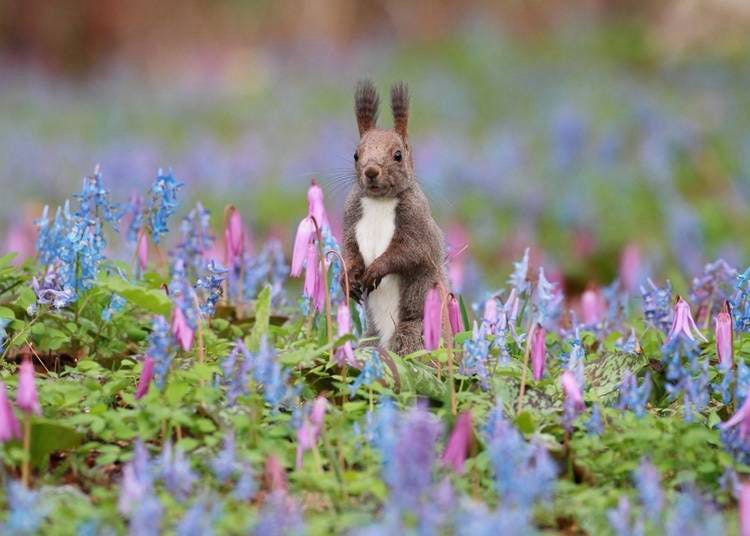
10 Absolutely Adorable Animals in Hokkaido You May Encounter on a Lucky Day!
- Written by: Minna no Kotoba Sha
Residents of Hokkaido share the land with a great variety of wildlife, some of which can even be seen hanging out in urban districts! But when it comes to animals in nature, Hokkaido and Honshu (the main island of Japan) are separated by a faunal boundary line known as Blakiston's Line. This means that some animal species can only be found in Hokkaido and not Honshu, and vice versa!
Here's a list of 10 adorable Hokkaido animals you can look out for during your trip here that will add some fun and excitement in between bouts of sightseeing!
1. Ezo red squirrel: Comes with a pair of charming long ears
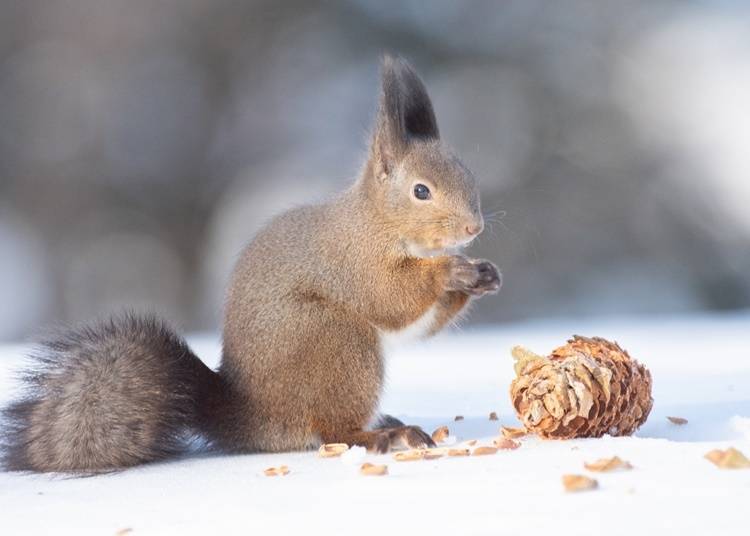
The ezo red squirrel is a subspecies of the Eurasian red squirrel that can only be found in Hokkaido. Its body length is usually between 20 to 26 centimeters (about 8 to 10 inches).
Ezo red squirrels don't hibernate, so they start growing an impressive winter pelage from autumn onwards, making them very fluffy from head to tail! One of the characteristics of this species is that the fur on the tip of their ears also starts growing longer during this period.
Autumn is also the season when these squirrels will start stashing nuts like walnuts and acorn underground in preparation for winter. Every now and then, some of these nuts will be forgotten by the squirrels and grow new shoots when spring rolls around.
Ezo red squirrels thus do their part to contribute to the forest's ecosystem, which is why some people call them forest custodians! These squirrels are most active in the morning from winter to spring, in the day during summer, and in the afternoon during autumn.
You can find ezo red squirrels everywhere in Hokkaido where there are forested areas, like Sapporo's Maruyama Park. In spring, when the Asian fawnlilies in Urausu Shrine starts blooming, the sight of these squirrels scampering around the colorful blooms makes for a dreamy sight worth making a special trip over for.
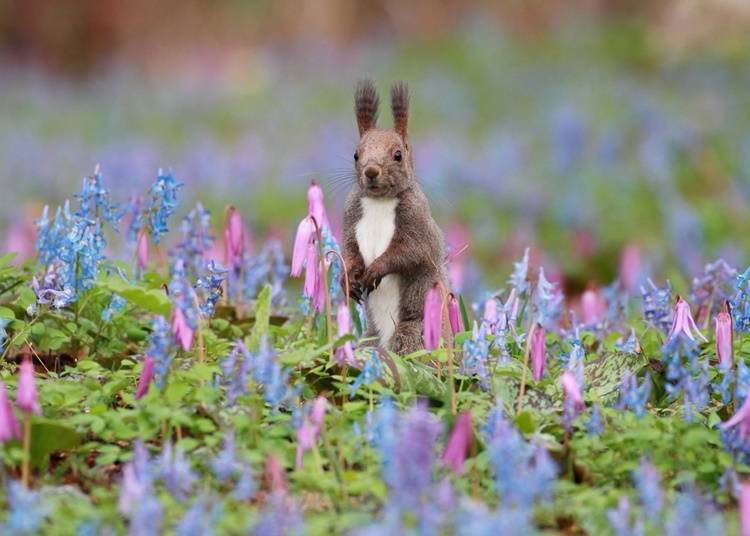
2. Pika: Palm-sized bunny
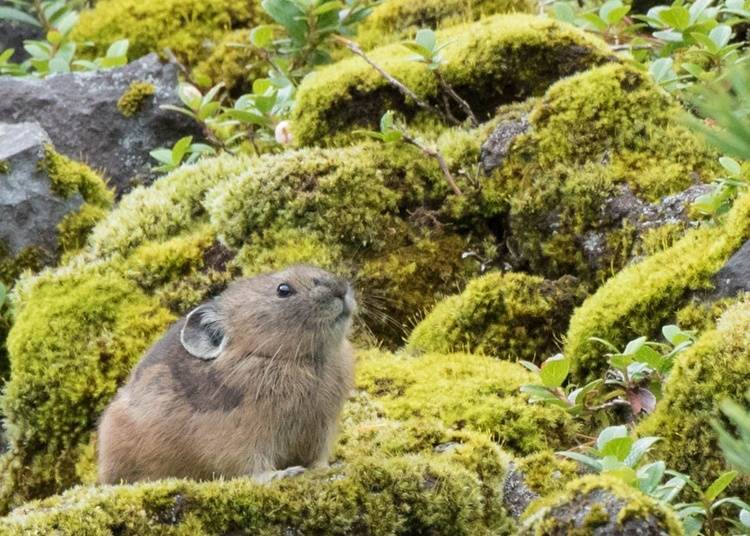
At first glance, the pika looks like a rat, but these cute and fluffy animals are classified as under the ochotonidae family, which is a part of the lagomorpha order. That makes them more closely related to rabbits than rats!
These mammals grow to about 10 to 20 centimeters (about 4 to 8 inches) in length. They crossed over from the Siberia region to Hokkaido during the Ice Age more than 10,000 years ago and adapted to the cool temperatures in the mountains here over time after the glaciers melted.
Pikas don't hibernate during winter, so they'll start storing hay towards the end of summer in preparation for the cold. If you're fortunate, you may catch a glimpse of them sunning themselves on rocks during the day.
Note, though, that they are usually most active during early morning. These creatures are naturally alert and agile, so it certainly won't be easy to simply bump into one.
Because Pikas cannot take hot temperatures, the only suitable habitat for them in Japan is in a few limited regions of Hokkaido. Most of them live in rocky mountainous areas at an elevation of 800 meters (about 2,624 feet) or higher, such as the Daisetsuzan Volcanic Group or Hidaka mountains.
3. Shima Enaga: Lovely little bird that looks like a snow fairy!
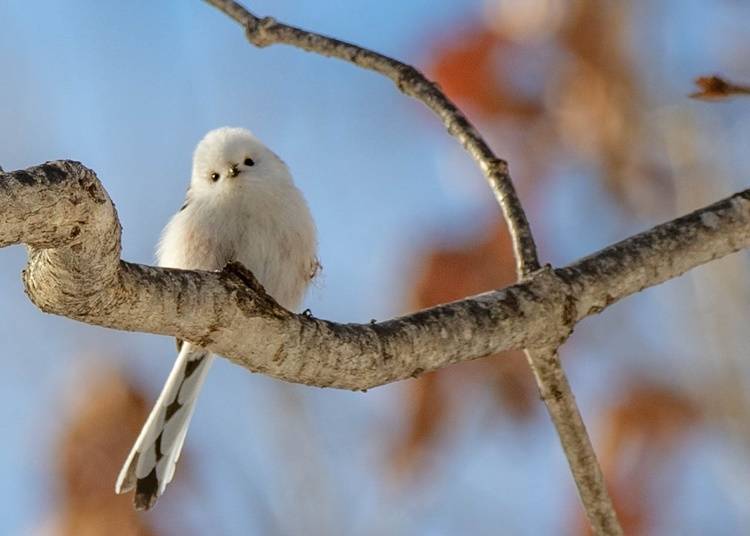
Shima Enaga is a subspecies of long-tailed tit that can only be found in Hokkaido. It grows to a length of about 14 centimeters (5.5 inches) from head to tail, with its tail alone occupying half that length!
During winter, its feathers turn white and fluffy so as to trap enough heat to endure the cold. This has the effect of making them look like round little furballs, and pictures of this adorable sight have been making their rounds around social media and gaining them much popularity.
People fondly call the bird "snow fairy" because of this surreal form.
Winter is the best season to try to catch sight of a Shima Enaga. As a tiny bird, these creatures are very cautious and move quickly, making them hard to track down.
Nevertheless, there have been sightings reported of a few intrepid fluff balls showing up in Sapporo near mountainous areas such as Maruyama Park or Mount Moiwa.
4. Sakhalin fox: The representative animal of Hokkaido

The wildlife you're most likely to encounter in Hokkaido is the Sakhalin fox, a larger species of fox than the Japanese red fox found on mainland Japan.
The Sakhalin fox's fur is distinctly white from chin to stomach, and it has black fur behind its ears, as well as on its paws. It grows a thicker coat during winter, and the extra volume makes it look even more adorable than usual.
These foxes can be found in almost any terrain, from flatlands to highlands. You may even encounter one or two in forested areas and urban districts!
Do note, though, that Sakhalin foxes can carry a parasite called echinococcus on their bodies, which can cause fatal diseases should they enter the human body. The incubation period until symptoms show up is very long, in some cases only manifesting themselves after 10 years.
So if a relatively friendly fox should approach you during your trip, never try to touch them no matter how cute they may seem! All residents and visitors are also strictly prohibited from feeding wild foxes.
5. Red-crowned crane: Elegant snowland wild bird

These birds are known as sarurun kamuy in the Ainu language, which means "god of the marsh", due to their impressive forms. Their wingspan can reach a length of 2.4 meters (about 8 feet), making them one of the largest wild birds in Japan. Red-crowned cranes can only be seen in Hokkaido if you're in Japan.
While they were formerly spotted in all regions of Hokkaido, overhunting and habitat loss has led to a population reduction, and these cranes have subsequently been designated as a Special Natural Monument of Japan. Fun fact: The reddish part on the crown of these cranes is actually skin and not feathers!
Although red-crowned cranes are migratory birds by nature, they can be seen in parts of Hokkaido throughout the year. They mainly reside in marshes towards the east, such as Kushiro Marsh and Kiritappu Wetlands.
There's a feeding ground for them in Kushiro's Tsurui Village, where more than 200 red-crowned cranes will gather during winter.
6. Yezo sika deer: A very familiar natural sight
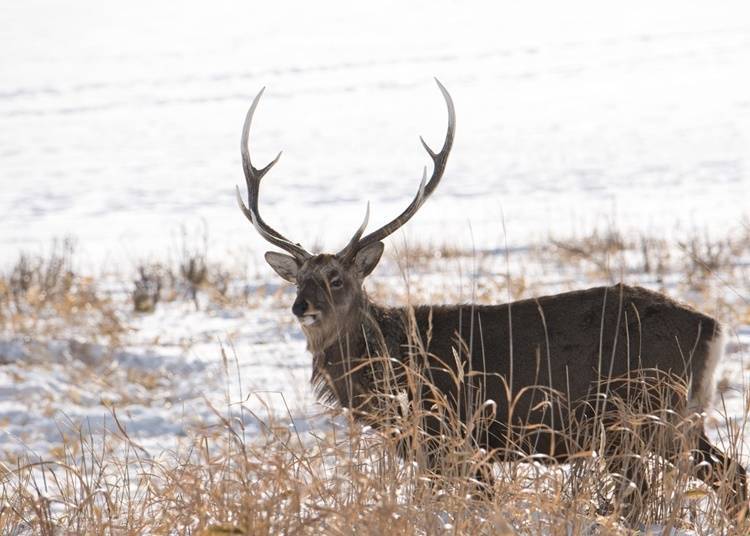
A subspecies of sika deer that only lives in Hokkaido, and one of the wild animals you're most likely to encounter on a trip to the northern prefecture. These deer can grow to a body length of 1.5 to 1.9 meters (about 5 to 6 feet), making them the largest subspecies among the sika deer.
Stags use their antlers as weapons during territorial disputes, and they shed their antlers every year. Between April to May, the molted parts of the horns will fall off naturally, and new horns will be ready for action by the time breeding season starts in autumn.
Yezo sika deer can mainly be found in the eastern part of Hokkaido, in areas such as Shiretoko Peninsula or Notsuke Peninsula. Their numbers have increased in recent years and more are starting to show up in areas closer to human activity, like Sapporo's suburbs.
Unfortunately, these deer are also constantly involved in accidents with automobiles and trains, so keep an eye out for them whenever you're on the road!
7. White-tailed eagle: Migratory bird that visits during drift ice season
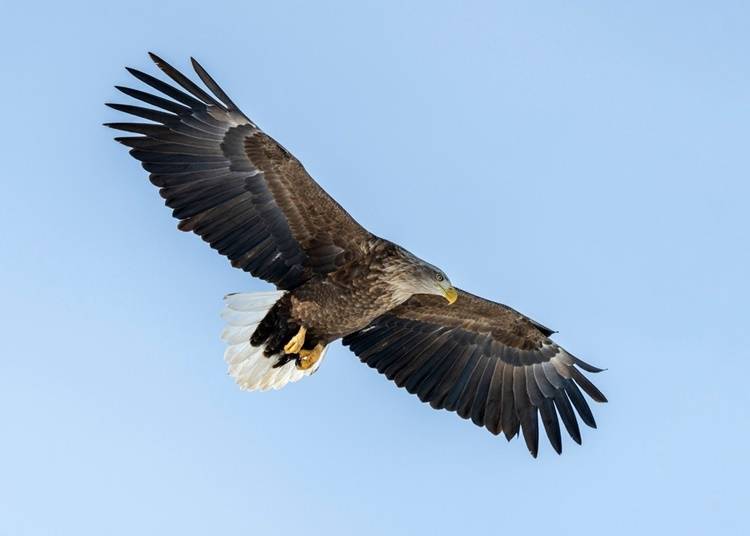
This large eagle sports a white-tipped tail, hence the name. Due to habitat loss from urban development and deforestation, Japan designated it as a National Natural Monument in 1970.
The white-tailed eagle is a migratory bird that lives in the northern Eurasian continent during summer, then flies to Hokkaido during drift ice season in winter. Some have also made Shiretoko or Notsuke Peninsula their homes, where they can be observed all year round.
The best time and place for observing these magnificent creatures is during wintertime in Shiretoko. Stellar's sea eagle, the largest eagle species in Japan, also winters in Shiretoko, so you'll be able to observe both eagles in one trip!
The eagles are easy to tell apart by coloring. White-tailed eagles have light grey or brown feathers with white tail feathers, whereas Stellar's sea eagles have more white feathers on their bodies and clearly defined monochrome colors.
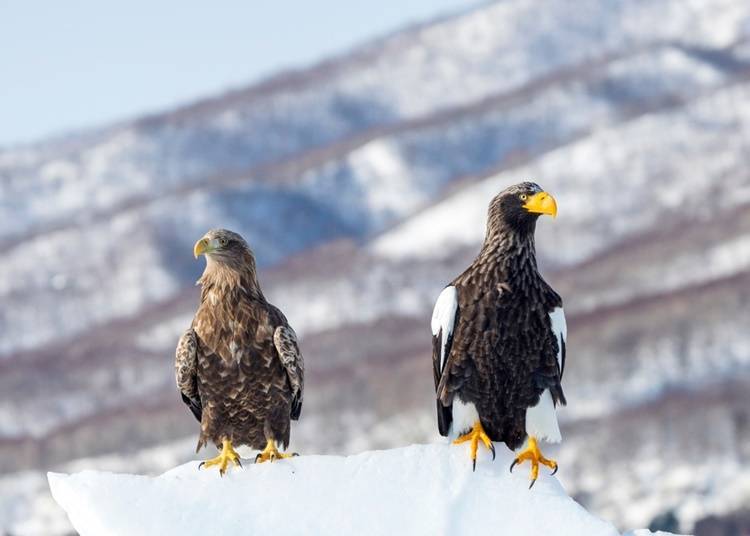
8. Ezo momonga flying squirrel: Large round eyes are its hallmark
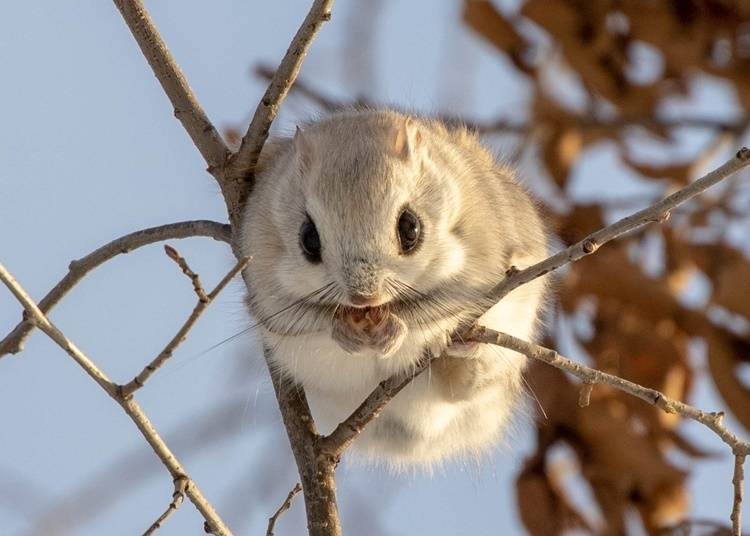
A subspecies of the Siberian flying squirrel, the ezo momonga is native only to Hokkaido. They make nests in trees and spend most of their lives on tree branches. Equipped with gliding membranes to navigate around the sky, they can glide effortlessly for up to 50 meters (about 164 feet) at one go!
These flying squirrels can be seen throughout all regions of Hokkaido, including parks and forests in Sapporo City, like Maruyama Park or Nopporo Forest Park.
They are generally nocturnal and very cautious creatures, but between February and March, they start becoming more active due to it being breeding season, which means you may have a higher chance of spotting them during this period, especially in the early morning or evening.
9. Ezo Ural owl: Night hunter that uses sound to catch prey
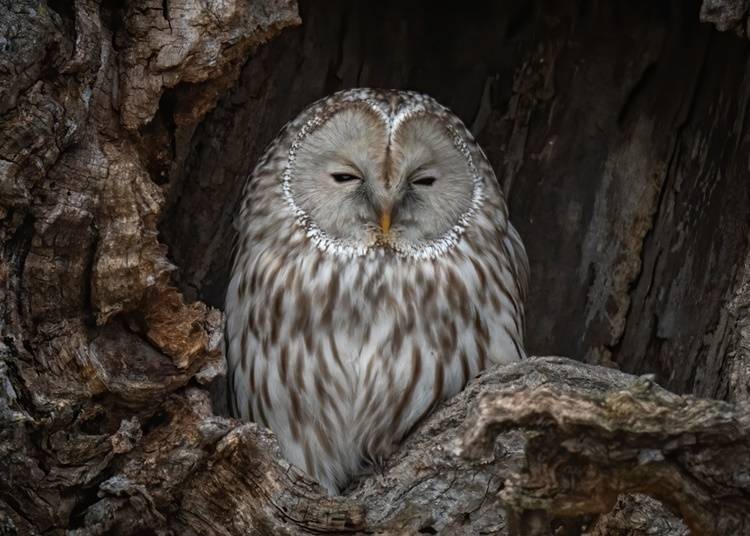
This is a subspecies of the Ural owl that can be found throughout Japan. The farther north they are, the more white plumage the Ural owls will sport, whereas Ural owls residing in the south generally have thick, brown feathers. One of the most distinct characteristics of the ezo Ural owl is that their feathers are mostly white.
These creatures see very well in the dark and therefore excel in hunting in darkness. The position of their ears is also slightly slanted, allowing them to hear even the faintest rustling sounds and pinpoint their prey's location with great accuracy.
Since they are primarily active at night, they will sleep during the day, and if you search through forested areas carefully when the sun is up, you just may be able to find an ezo Ural owl or two slumbering away inside a tree hollow!
Ezo Ural owls have also been spotted in forested areas near the suburbs of Sapporo, such as Maruyama Park or Nopporo Forest Park.
10. Blakiston's fish owl: The guardian deity of Hokkaido
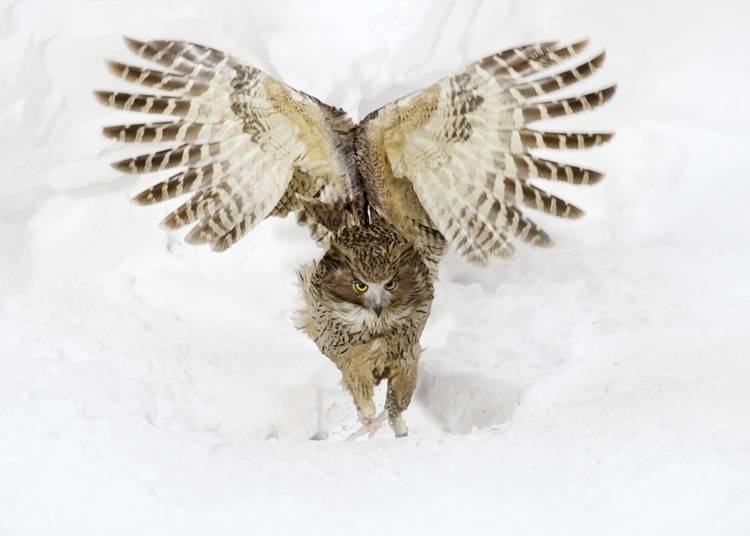
With a wingspan of about 1.8 meters (6 feet), Blakiston's fish owl is the largest species of owl in the world! The Ainu revered the owl as a guardian deity, calling it Kotan koru Kamuy, which means "god that protects the village."
While most owl species try not to make any sound when flying around in order not to alert their prey, this unusual owl flaps its wings with great gusto as it mainly feeds on fish.
There are currently about 160 Blakiston's fish owls in the wild, and they have been designated as a National Natural Monument in Japan. The only place in Japan to see these creatures is Hokkaido, especially in Shiretoko Peninsula or Nemuro Peninsula.
In Shiretoko's Rausu Town, there is a travel inn called Washi no Yado that has feeding grounds for the owls, which allows guests and visitors to observe these majestic birds in action more closely.
Points to note if you should encounter any Hokkaido animals
You may instinctively want to reach out and touch the Hokkaido wildlife that you encounter, but please absolutely refrain from doing so, as you may startle the animal into attacking you, or get infected with diseases that they carry.
Please also refrain from feeding them, as this acclimatizes them to human food and will encourage them to start seeking out human contact, upsetting the natural ecosystem as a result and causing harm to human activities as well.
Keep in mind as well that accidents with wild animals may sometimes occur when you are driving on the roads of Hokkaido. This is especially so with yezo sika deer and foxes, as they may dash out onto the road without warning, or perhaps stand in the middle of the road without moving.
Should this happen, first make sure everyone in the vehicle is safe, then quietly observe the animals without provoking them in any way.
*Information in this article is accurate as of April 2021.
Text by: Minna no Kotobasha
English translation by: Huimin Pan
Minna no Kotoba Sha is a production company founded by an editor with extensive experience in editing local magazines in Sapporo. For over 20 years, our team has conducted research and written articles across Hokkaido, with Sapporo as our primary hub. Our diverse portfolio includes the production of various books such as travel guides, informational magazines, and collections showcasing the picturesque landscapes of Hokkaido. Comprised entirely of women, the team at Minna no Kotoba Sha boasts diverse interests, including a passion for travel, culinary delights, and alcoholic beverages. The scope of our communication efforts spans a wide range, covering everything from introducing notable restaurants to providing coverage of local events and sharing stories of leisure experiences.
- Area
- Category
*Prices and options mentioned are subject to change.
*Unless stated otherwise, all prices include tax.
Popular Tours & Activitiess
Recommended places for you
-
Appealing

Shirogane Blue Pond (Aoiike)
Rivers, Lakes & Canyons
Furano / Biei / Sounkyo
-

Hokkaido University
Other Architecture
Sapporo / Chitose
-

Farm Tomita
Other Nature
Furano / Biei / Sounkyo
-
Appealing

Asahiyama Zoo
Zoos, Aquariums & Botanical Gardens
Asahikawa
-
Appealing

Rukku and Uohei
Izakaya
Sapporo / Chitose
-

Niseko Village Ski Resort
Skiing & Snowboarding
Niseko / Rusutsu
-

Scenic Road Trip from Hakodate to Matsumae: Stunning Views, Traditions, and Tasty Delights
by: Nobuka Kawashima
-

Expert-Recommended: 9 Hakodate Hotels Serving Up the Best Breakfasts in Town
by: Nobuka Kawashima
-

Beyond Hakodate and Matsumae: Enjoy the Hidden Gems of Hokkaido’s Donan Area
-
Ad

Cycling Through Hokkaido: Discover the Beauty of Memuro and the Tokachi Plains
-

Great Local Eats: 5 Expert-Recommended Local Chain Restaurants in Hakodate
by: Nobuka Kawashima
-
Ad

Smart Ways to Avoid Crowds and Enjoy a Safe, Comfortable Trip to Noboribetsu Onsen
-

Where to Stay in Noboribetsu Onen: 6 Ryokan Hotels in Hokkaido's Spa Wonderland
by: Masakazu Yoshida
-

(Video) Walking Tour along Narita Omotesando - Quaint Historical Village near Narita Airport!
by: Victor Gonzalez
-

Summer Adventure! Sapporo Day Trip to Enjoy Gorgeous Lavender Fields
-

Must-Try! 9+ Things to Do in Niseko in Summer for All-Day Fun
-

Top 5 Things to Do in Hokkaido's Biei and Furano Area: Shirogane Blue Pond, Lavender Fields, And More!
-

Japan's Bath Culture: Tips You Should Know!
- #best sushi hokkaido
- #things to do hokkaido
- #best ramen sapporo
- #what to bring to japan
- #new years in tokyo
- #what to buy in ameyoko
- #japanese nail trends
- #what to do in odaiba
- #onsen tattoo friendly tokyo
- #daiso
- #best sweets otaru
- #japanese fashion culture
- #best nature furano
- #japanese convenience store snacks
- #best japanese soft drinks
















